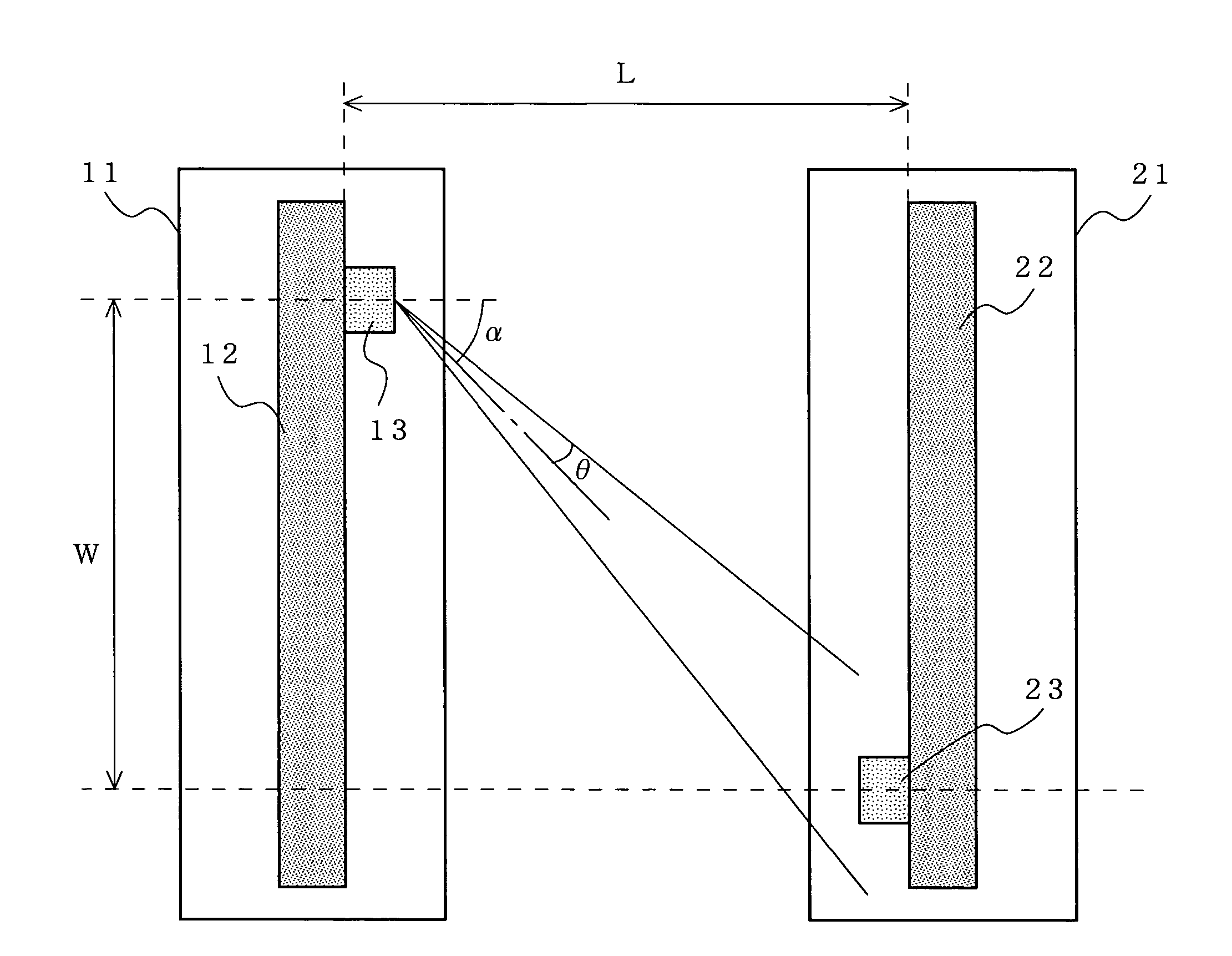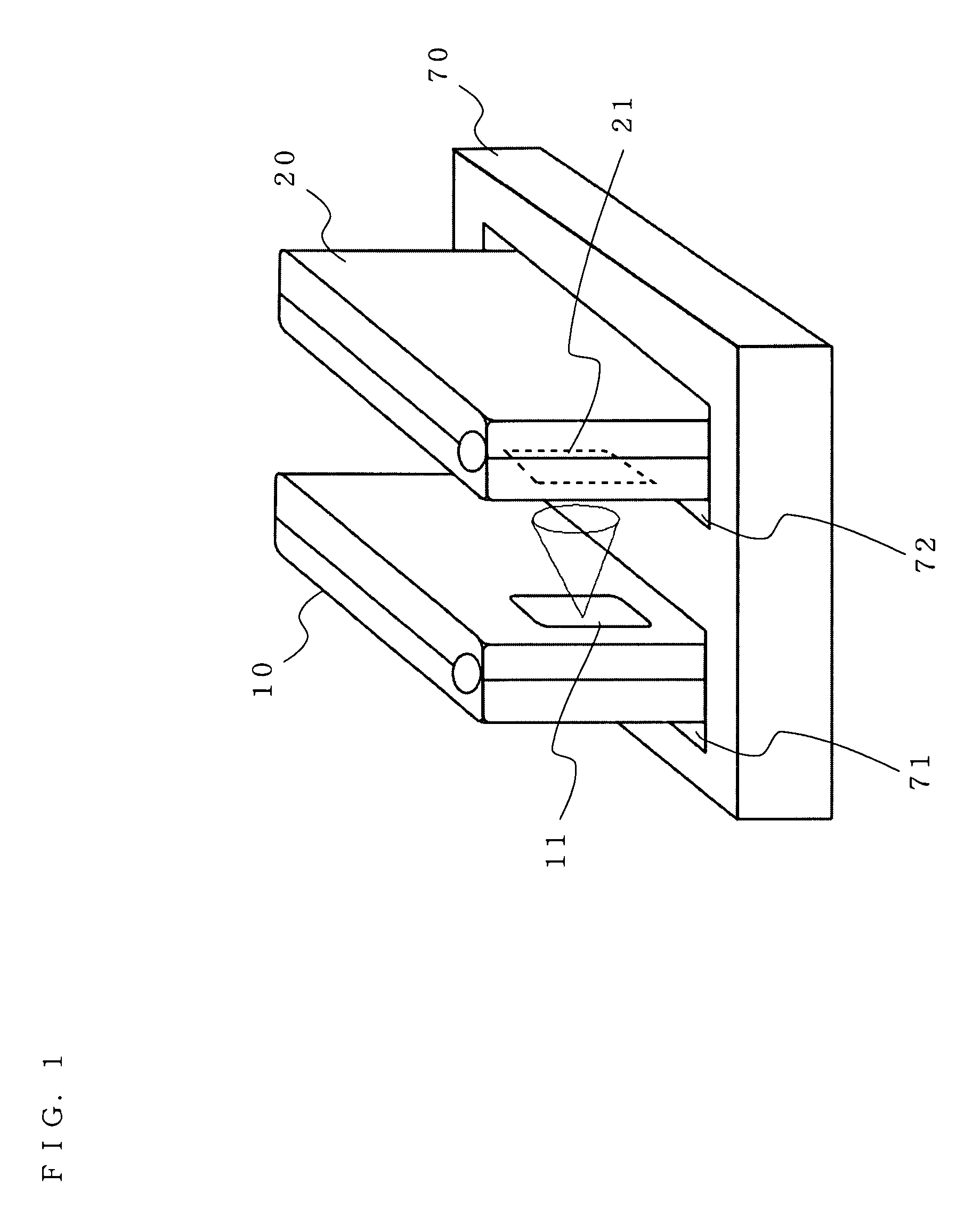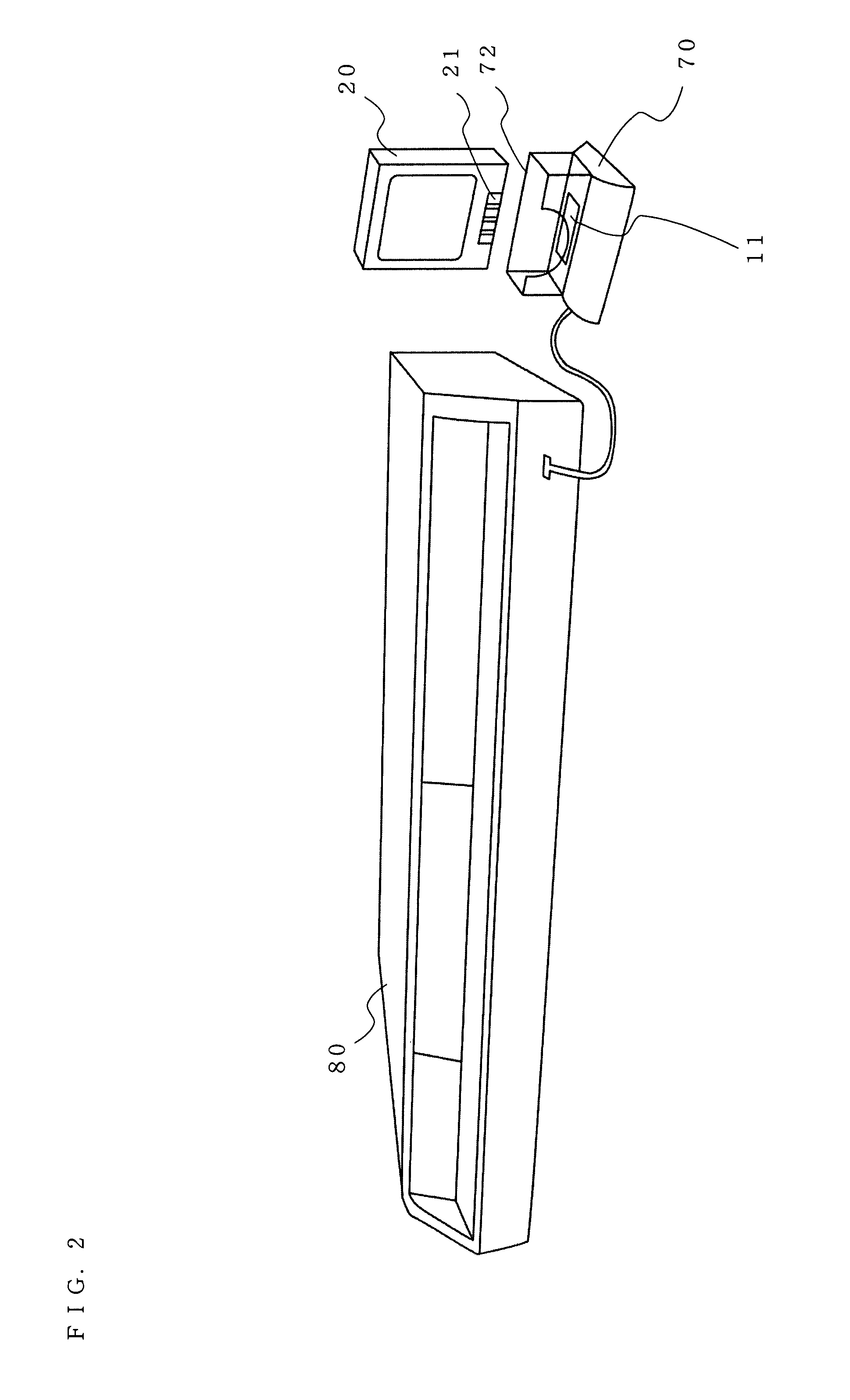Optical wireless transmission system
a wireless transmission and optical technology, applied in the direction of instruments, optical elements, discharge tubes/lamp details, etc., can solve the problems of increasing the size, difficult to perform high speed transmission, and reducing the total light receiving power, so as to achieve stable high speed data communication
- Summary
- Abstract
- Description
- Claims
- Application Information
AI Technical Summary
Benefits of technology
Problems solved by technology
Method used
Image
Examples
first embodiment
[0053]FIG. 3 is a perspective view illustrating the optical wireless transmission system according to a first embodiment of the present invention. FIG. 4 is a cross-sectional view along lines A-A illustrating the optical wireless transmission system shown in FIG. 3. As shown in FIGS. 3 and 4, the optical transmission section 11 of the transmission terminal 10 has a light emission section 13 provided on a mounting substrate 12. The optical reception section 21 of the reception terminal 20 has a light reception section 23 provided on a mounting substrate 22.
[0054]The light emission section 13, including a light emitting element such as a semiconductor laser, emits a light beam based on communication data. The light reception section 23, including a light receiving element such as a photodiode, receives the light beam emitted by the light emission section 13. According to the present invention, the light emission section 13 and the light reception section 23 are positioned and an emiss...
example 1
(1) Structure Example 1
[0059]In structure example 1, the light emitting element 14 corresponding to the light emission section 13 is previously tilted with respect to the mounting substrate 12, as shown in FIG. 5. This structure allows the illumination direction of the light beam to be easily changed. When the mounted light emitting element 14 is not fixed in a stable manner, a component for supporting the light emitting element 14 may be additionally provided.
example 2
(2) Structure Example 2
[0060]In structure example 2, the light emitting element 14 is mounted on the mounting substrate 12 in a normal state, and an optical fiber 15 is connected to the light emitting element 14 so as to be tilted with respect to the light emitting element 14, as shown in FIG. 6. This structure allows the illumination direction to be easily changed. A component for supporting the optical fiber 15 may be additionally provided such that the optical fiber 15 is fixed to the light emitting element 14. A light emission end face of the optical fiber 15 may be ground so as to be beveled at about 7 degrees such that the returned reflected light is prevented from being returned to the light emitting element 14.
[0061]In general, when wiring between a light emitting element and a driving circuit for the light emitting element is elongated, the characteristics for high speed modulation are degraded. When the light emitting element 14 is mounted on the mounting substrate 12 so a...
PUM
 Login to View More
Login to View More Abstract
Description
Claims
Application Information
 Login to View More
Login to View More - R&D
- Intellectual Property
- Life Sciences
- Materials
- Tech Scout
- Unparalleled Data Quality
- Higher Quality Content
- 60% Fewer Hallucinations
Browse by: Latest US Patents, China's latest patents, Technical Efficacy Thesaurus, Application Domain, Technology Topic, Popular Technical Reports.
© 2025 PatSnap. All rights reserved.Legal|Privacy policy|Modern Slavery Act Transparency Statement|Sitemap|About US| Contact US: help@patsnap.com



